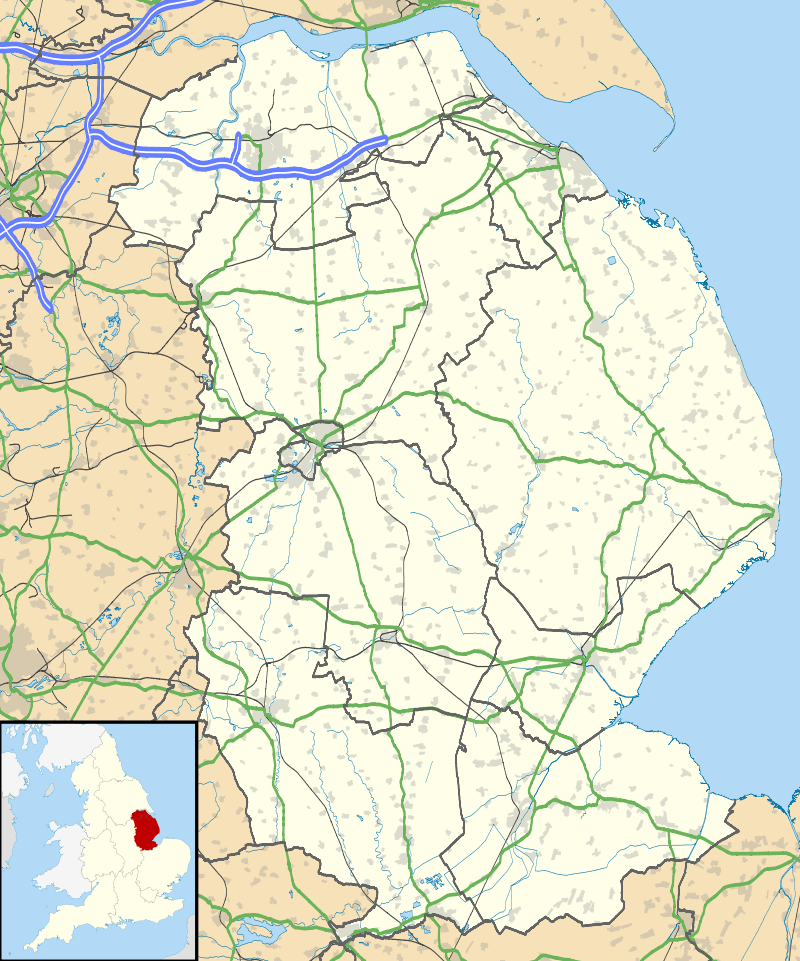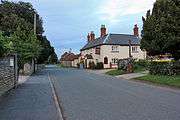Rippingale
| Rippingale | |
 St Andrew's Church, Rippingale |
|
 Rippingale |
|
| Population | 929 (2011) |
|---|---|
| OS grid reference | TF098278 |
| – London | 90 mi (140 km) S |
| District | South Kesteven |
| Shire county | Lincolnshire |
| Region | East Midlands |
| Country | England |
| Sovereign state | United Kingdom |
| Post town | Bourne |
| Postcode district | PE10 0TJ |
| Police | Lincolnshire |
| Fire | Lincolnshire |
| Ambulance | East Midlands |
| EU Parliament | East Midlands |
| UK Parliament | Grantham and Stamford |
|
|
Coordinates: 52°50′13″N 0°22′15″W / 52.836949°N 0.370894°W
Rippingale is a village and civil parish in the South Kesteven district of Lincolnshire, England. The population of the civil parish was 929 at the 2011 census.[1] The village is situated on the A15 road, about 5 miles (8 km) north from Bourne.[2]
Rippingale is part of the Ringstone in Aveland group of parishes, in the Aveland Deanery of the Diocese of Lincoln.[3] The incumbent is Linda Pugh.[3] St Andrew's parish church dates from the thirteenth and fourteenth century, though the tower dates from a century later.[4] In the church yard was located a weeping ash, Fraxinus excelsior 'Pendula' – a tree rare for Britain. It survived for a century until 2002 – having died it was felled.

The village public house is The Bull Inn. A railway station on a line between Bourne and Sleaford opened in 1871 for goods and closed in 1964; regular passenger services lasted from 1872 to 1930.[5] The Church of England Primary School closed in July 2007, and the post office around the same time.
Rippingale falls within the drainage area of the Black Sluice Internal Drainage Board.[6]
South of the village is the site of Ringstone, a lost village, which dates from before the Norman conquest and which survived into the 19th century as Ringstone Hall.TF094270[7]

Rippingale has a village design statement produced by a Village Design Statement Committee. The committee was established to produce guidance for South Kesteven District Council (SKDC). The statement was adopted in 2002.[8][9]
References
- ↑ "Civil Parish population 2011". Neighbourhood Statistics. Office for National Statistics. Retrieved 27 May 2016.
- ↑ "Parish Council".
- 1 2 "Parish details from the Lincoln Diocese web site".
- ↑ Historic England. "Church (348371)". PastScape. Retrieved 17 March 2010.
- ↑ See the page on the Bourne, Lincolnshire website.
- ↑ "Black Sluice IDB".
- ↑ Historic England. "DMV at Ringstone (348366)". PastScape. Retrieved 13 April 2010.
- ↑ Rippingale Village Design Statement
- ↑ Rippingale VDC website
External links
 Media related to Rippingale at Wikimedia Commons
Media related to Rippingale at Wikimedia Commons- Rippingale village website
- Rippingale Design Statement
- First Series OS map, includes Ringstone